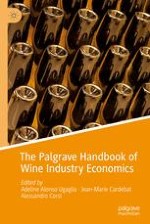2019 | OriginalPaper | Buchkapitel
16. The Organization of Vineyards and Wineries
verfasst von : Douglas W. Allen, Dean Lueck
Erschienen in: The Palgrave Handbook of Wine Industry Economics
Verlag: Springer International Publishing
Aktivieren Sie unsere intelligente Suche, um passende Fachinhalte oder Patente zu finden.
Wählen Sie Textabschnitte aus um mit Künstlicher Intelligenz passenden Patente zu finden. powered by
Markieren Sie Textabschnitte, um KI-gestützt weitere passende Inhalte zu finden. powered by
